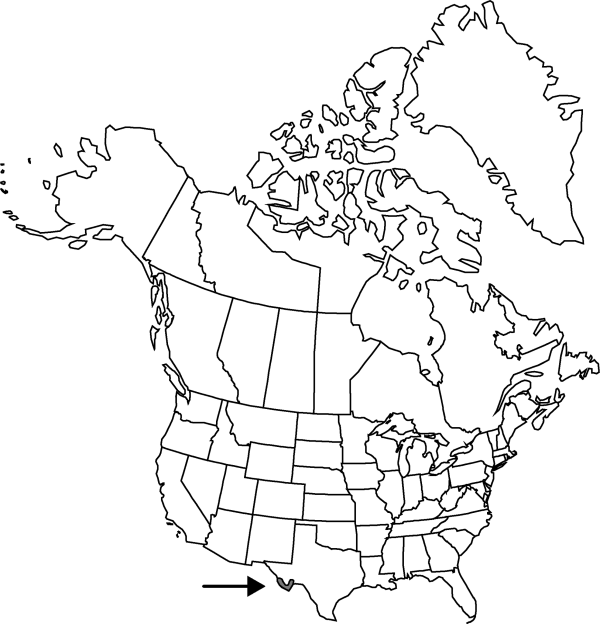Grusonia aggeria
Cact. Succ. J. (Los Angeles) 71: 325. 1999.
Shrubs, forming clumps, 3–9 cm. Roots tuberlike, 7–8 × 2.5–3 cm. Stem segments short cylindric to clavate, 3.5–9 × 1.5–3 cm; tubercles 8–18(–22) mm; areoles circular 3–4 mm in diam.; wool yellowish white. Spines (1–)5–15 per areole, mostly in distal areoles, 3–5 cm; major 1–3 abaxial spines deflexed, usually chalky white (at least adaxially), flattened to angular-flattened, longest central abaxial spine commonly twisted or curved (at times the only spine in depauperate specimens, those mostly from Big Bend region of Texas); major 0–5 adaxial spines divergent, ascending, brown to blackish and sometimes chalky, ± terete. Glochids adaxial in areole, yellow, to 4 mm. Flowers: inner tepals bright yellow, 25 mm; filaments green; style cream; stigma lobes pale yellow-green. Fruits yellow, aging gray, cylindric to ellipsoid, 20–25(–50) × 10–15 mm, becoming dry, spineless, glochidiate; areoles 25–35. Seeds yellowish to brownish, ± circular, to 5 mm in diam., with various numbers and sizes of bumps. 2n = 22.
Phenology: Flowering spring (Mar–May).
Habitat: Chihuahuan Desert, sandy or gravelly flats, scrub with creosote bush, lower slopes, limestone or igneous substrates
Elevation: 600-1500 m
Distribution

Tex., Mexico (Coahuila).
Discussion
Grusonia aggeria is based on the “type” of “Opuntia grahamii × O. schottii” described by M. S. Anthony (1956). It is not a hybrid, however, between the two tetraploid putative parental taxa; it is instead a fully fertile, diploid species.
Selected References
None.